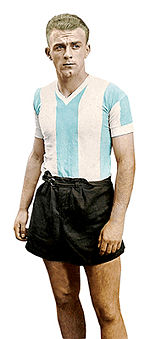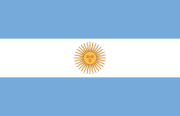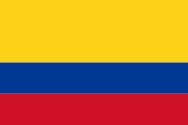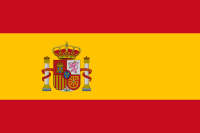Alfredo di Stéfano
| Alfredo di Stéfano | ||
 |
||
| Personal information | ||
|---|---|---|
| Full name | Alfredo S. di Stéfano Laulhé | |
| Date of birth | 4 July 1926 | |
| Place of birth | Buenos Aires, Argentina | |
| Height | 1.78 m (5 ft 10 in) | |
| Playing position | Striker | |
| Senior clubs1 | ||
| Years | Club | App (Gls)* |
| 1943–1949 1946–1947 1949–1953 1953–1964 1964–1966 |
River Plate → Huracán (loan) Millonarios Real Madrid Espanyol Total |
65 (49) 25 (10) 102 (88) 282 (216) 47 (11) 521 (377) |
| National team | ||
| 1947 1949 1957–1961 |
Argentina Colombia Spain |
6 (6) 4 (0) 31 (23) |
| Teams managed | ||
| 1967–1967 1969–1970 1970–1974 1974–1974 1975–1976 1976–1977 1979–1980 1981–1982 1982–1984 1985–1985 1986–1988 1990–1991 |
Elche CF Boca Juniors Valencia CF Sporting Lisbon Rayo Vallecano CD Castellón Valencia CF River Plate Real Madrid Boca Juniors Valencia CF Real Madrid |
|
|
1 Senior club appearances and goals |
||
- This is a Spanish name; the first family name is di Stéfano and the second is Laulhé.
Alfredo di Stéfano Laulhé (born 4 July 1926 in Barracas, Buenos Aires) is an Argentine - Spanish former footballer and coach. He is most associated with Real Madrid and was instrumental in their domination of the European Cup of Champions during the 1950s, a period in which the club won the trophy in five consecutive seasons from 1956. Di Stéfano also played international football for Argentina, Colombia, and Spain.
Di Stéfano, nicknamed Saeta rubia ("Blond arrow"),[1][2][3] was a powerful forward with great stamina, tactical versatility, and vision. He could also play almost always anywhere on the pitch and despite being most well-known as a forward, was great in defense. He is currently the 3rd highest scorer in the history of Spain's top division, with 228 goals in 329 games, behind Hugo Sánchez (234 goals) and Telmo Zarra (251). Di Stéfano is also Real Madrid's highest league goalscorer of all time, with 216 goals in 282 league matches between 1953 and 1964.
In November 2003, to celebrate UEFA's Jubilee, he was selected as the Golden Player of Spain by the Royal Spanish Football Federation as their most outstanding player of the past 50 years.[4] He was named by Pelé as one of the "top 125 greatest living footballers" in March 2004. Di Stéfano was voted fourth, behind Pelé, Diego Maradona, and Johan Cruijff, in a vote organised by the French weekly magazine France Football consulting their former Ballon D'Or winners to elect the Football Player of the Century [5]
Contents |
Club playing career
Born to a family of Italian immigrants, Di Stéfano began his career at Argentina's River Plate aged 17, in 1943. For the 1946 season he was loaned to Club Atlético Huracán, but he returned to River in 1947. Due to a footballer's strike in Argentina in 1949, Di Stéfano went to play for Millonarios of Bogotá in the Colombian league. He won six league titles during the first 12 years of his career in Argentina and Colombia.
Di Stéfano is best known for his time at Real Madrid where he was an integral part of one of the most successful teams of all time. He scored a club record 216 league goals in 262 games for Real, striking up a fearsome partnership with Ferenc Puskás. Di Stéfano's 49 goals in 58 matches was for decades the all-time highest tally in the European Cup, until it was surpassed by Real Madrid's Raúl in 2005, and A.C. Milan's Andriy Shevchenko, and Real Madrid's Ruud van Nistelrooy in 2006. Perhaps the highlight of his time with the club was their 7-3 victory over Eintracht Frankfurt in the 1960 European Cup Final at Hampden Park, a game many consider to be the finest exhibition of club football ever witnessed in Europe. He was voted European Footballer of the Year in 1957 and 1959.
He moved to Espanyol in 1964 and played there until hanging up his boots at the age of 40.
Controversy surrounding transfer to Spain
Di Stéfano's transfer to Spain would prove controversial. The mission to secure the signing of Di Stéfano to FC Barcelona had first been given to Ramón Trias Fargas, who, besides being a lawyer and expert in commercial law, was the son of one of the share-holders of Millonarios, where Di Stéfano was playing at the time. According to Trias Fargas, Barcelona's own management effectively obstructed the transfer when club president Marti Carreto also involved Barcelona chief scout Josep Samitier in the negotiations. Samitier, in his turn, brought in his Colombian friend, Joan Busquets, to speed up the talks with the Colombian club. Busquets, a director of Millonarios' rivals Club Santa Fe, seem to have tried more to sabotage the deal than to secure it. After issuing a harsh ultimatum to Millonarios to accept a modest offer for the player he organized Di Stéfano's defection from Colombia when the ultimatum was rejected, despite Di Stéfano owing the club money. River Plate, who owned the rights of the player from 1955 onwards, had accepted the transfer on the condition that Millonarios also agreed upon the transfer, which they, after what they perceived as Busquets' bullying tactics, weren't interested in doing. Trias Fargas' negotiations with the Colombians regarding a transfer sum were also breaking down when Carreto, despite assurances to Trias Fargas that he would pay whatever price Trias Fargas thought necessary, rejected a figure whenever it was agreed between the lawyer and the Colombians. Trias Fargas blamed Carreto claiming Barcelona directors had allowed him to spend $20,000 but Carreto only accepted to offer $10,000 plus the player's debts.
In 1953, Di Stéfano signed a deal with FC Barcelona and FIFA, who didn't know anything about Di Stéfano having left Millonarios without permission, authorized the transfer from River Plate. The Spanish Federation, however, did not recognise the deal. According to Andres Ramírez, the Spanish Football Federation secretary, both Millonarios (who owned the rights of the player until the end of 1954, according to the agreements reached in the Lima Pact) and River Plate's consent were needed in order for Di Stéfano to sign up with a Spanish club. Indeed Millonarios had reported FIFA the anomalous situation of the Argentinian, so FIFA iteself demanded the Spanish Federation to solve the problem. On 13 May 1953, he arrived in Spain to conclude his contract with Barcelona but during the discussions with the Federation, Real Madrid's president Santiago Bernabéu, acting upon the apparent division within the Barcelona management, convinced him to sign for them instead.
During the parallel negotiations between the two Spanish clubs and Millonarios, the Spanish Federation issued a ban on foreign players in the Spanish league. On September 15, the Spanish Federation made public the decision, which club presidents Carreto and Bernabéu had signed, to allow Di Stéfano four seasons in Spain - two for each team, to be played alternately. The agreement created such a storm of protests by the rest of the Barcelona management and the fans that Carreto resigned a week later. The interim board succeeding him opted to scratch the agreement all together for a compensation of four million pesetas, announcing on October 23 that Real Madrid could have the player permanently. In the meantime, Di Stéfano had made his Madrid debut (on September 23) and played poorly in each of his first few matches for the club. The reasons for FC Barcelona's decision to let the player go to Madrid are disputed by the two clubs. While Real Madrid have always maintained it was a voluntary decision by F.C. Barcelona, their rivals held that it was a decision made under pressure from Franco's government. There are also those who feel Di Stéfano's poor form in his first few games led Barcelona to think they might be better off without him anyway. On July 1953 Barcelona's coach, Fernando Dancik, wrote a report expressing numerous doubts about the player's form. Kubala's health improvement also made the Barcelona directives lose the interest in the Argentine. Barcelona's decision having been announced, the two clubs met the following week - and Di Stéfano scored three goals against FC Barcelona. This incident exacerbated the traditional enmity between the two clubs.[6]
International playing career
Di Stéfano played with three different national teams during his career: he played six times with the Argentine national team, four times with Colombia (not recognized by FIFA) and 31 times with the Spanish national team. However, he never played in the World Cup Finals.
World Cup absence
The first World Cup in which he would have been able to participate was the 1950 tournament. As Argentina refused to participate, Di Stéfano (aged 24) missed his first chance at playing in the World Cup.
For the 1954 World Cup, Argentina did not enter and FIFA declared Di Stéfano was not eligible to play because he had previously been capped by both Argentina and Colombia.
He acquired Spanish citizenship in 1956, and played four World Cup qualifying matches for Spain in 1957, but the team failed qualify for the 1958 World Cup.
In 1961, Di Stéfano (36) who had already won 5 European Cups, helped Spain qualify for the World Cup of 1962. A muscular injury just before the competition prevented him from playing in the finals.[7] He retired from international play after that.
Managerial career
After retirement, he moved into coaching. He guided the Argentine clubs Boca Juniors and River Plate to league titles, and won La Liga and the Copa del Rey with Valencia CF as well as the European Cup Winners' Cup with the side in 1980. He also managed Sporting Clube de Portugal in the 1974-5 season and Real Madrid between 1982 and 1984.
After Retirement
Alfredo Di Stéfano currently resides in Spain. On November 5, 2000 he was named President of Honour of Real Madrid.
On December 24, 2005, 79-year-old Di Stéfano suffered a heart attack, but made a full recovery.
Alfredo Di Stéfano once said of Diego Maradona "Technically, on an individual basis, he is far superior to me in what he can do with a ball; my ability to cover an entire field and versatility is what I hold over him, though with the right training he could easily do the same."
On the other hand, Maradona has also had words praising Di Stéfano. In comments made to RAI television in 1997, he said, "I don't know if I was a better player than Pelé, but I can say without any doubt that Di Stéfano was better than Pelé. I am proud when one speaks of Di Stéfano... I can say that Maradona could be worse than Pelé. But I emphasize Di Stéfano was better" .
On Tuesday May 9, 2006,The Alfredo Di Stéfano Stadium was inaugurated at the City of Real Madrid, where Real Madrid usually trains. The inaugural match was between Real Madrid and Stade de Reims, a rematch of the European Cup final won by Real Madrid in 1956. Real Madrid won the inaugural match in the Alfredo Di Stéfano Stadium by 6-1 with goals from Sergio Ramos, Antonio Cassano -2-, Roberto Soldado -2- and José Manuel Jurado.
Career statistics
| Club performance | League | Cup | League Cup | Continental | Total | |||||||
|---|---|---|---|---|---|---|---|---|---|---|---|---|
| Season | Club | League | Apps | Goals | Apps | Goals | Apps | Goals | Apps | Goals | Apps | Goals |
| Argentina | League | Cup | League Cup | South America | Total | |||||||
| 1944 | River Plate | Primera División | 0 | 0 | ||||||||
| 1945 | 1 | 0 | ||||||||||
| 1946 | Huracán | 25 | 10 | |||||||||
| 1947 | River Plate | 30 | 27 | |||||||||
| 1948 | 23 | 13 | 6 | 4 | ||||||||
| 1949 | 12 | 9 | ||||||||||
| Colombia | League | Cup | League Cup | South America | Total | |||||||
| 1949 | Los Millonarios | 15 | 15 | |||||||||
| 1950 | 29 | 23 | ||||||||||
| 1951 | 34 | 31 | ||||||||||
| 1952 | 24 | 19 | ||||||||||
| Spain | League | Copa del Rey | Copa de la Liga | Europe | Total | |||||||
| 1953-54 | Real Madrid | La Liga | 28 | 27 | ||||||||
| 1954-55 | 30 | 25 | ||||||||||
| 1955-56 | 30 | 24 | 7 | 5 | ||||||||
| 1956-57 | 30 | 31 | 8 | 7 | ||||||||
| 1957-58 | 30 | 19 | 7 | 10 | ||||||||
| 1958-59 | 28 | 23 | 7 | 6 | ||||||||
| 1959-60 | 23 | 12 | 8 | 9 | ||||||||
| 1960-61 | 23 | 21 | 2 | 0 | ||||||||
| 1961-62 | 23 | 11 | 10 | 7 | ||||||||
| 1962-63 | 13 | 12 | 2 | 1 | ||||||||
| 1963-64 | 24 | 11 | 9 | 5 | ||||||||
| 1964-65 | Espanyol | 24 | 7 | |||||||||
| 1965-66 | 23 | 4 | ||||||||||
| Total | Argentina | 90 | 59 | |||||||||
| Colombia | 102 | 88 | ||||||||||
| Spain | 329 | 227 | ||||||||||
| Career Total | 521 | 377 | ||||||||||
Honours
Club
 River Plate
River Plate
- Primera División Argentina: 1945, 1947
- Runner-up South American Championship Clubs : 1948
 Millonarios
Millonarios
- Colombian Championship: 1949, 1951, 1952, 1953
- Colombian Cup: 1953
- Copa Bodas de Oro del Real Madrid: 1952
 Real Madrid
Real Madrid
- La Liga: 1954, 1955, 1957, 1958, 1961, 1962, 1963, 1964
- Copa del Rey: 1962
- European Cup: 1956, 1957, 1958, 1959, 1960
- Intercontinental Cup: 1960
- Pequeña Copa del Mundo de Clubes: 1953, 1956
- Latin Cup: 1955, 1957
Country
 Argentina
Argentina
- Copa América: 1947
Honours
Individual honours
- 1947
- South American Player of the Year
- South American Top scorer: (27 goals)
- Argentine League Top Scorer: (27 goals)
- Best player of the American Cup
- 1951
- Colombian League Top Scorer: (31 goals)
- South American Top scorer: (31 goals)
- 1952
- Colombian League Top Scorer: (20 goals)
- 1953
- South American Player of the Year
- World Club Cup Top Scorer
- 1954
- Pichichi Trophy
- 1956
- World Soccer Player of the Year
- Silver Ball European Footballer of the Year France Football
- Pichichi Trophy
- 1957
- European Footballer of the Year France Football
- Pichichi Trophy
- World Soccer Player of the Year
- Spanish Player (Athlete) of the Year
- 1958
- Pichichi Trophy
- European Cup Top Scorer (10 goals) and 1962 (7 goals)
- 1959
- European Footballer of the Year France Football
- World Soccer Player of the Year
- Spanish Player (Athlete) of the Year
- Pichichi Trophy
- 1960
- Spanish Player (Athlete) of the Year
- 1964
- Spanish Player (Athlete) of the Year
- 2004
- Named in FIFA 100
- 1945-1966 Total goals in career: 1126 matches 893 goals.
References
- ↑ (Spanish) "The birth of the Saeta Rubia". Clarin (16 July 2005). Retrieved on 1 December 2008.
- ↑ "Saeta Rubia (Movie)". Retrieved on 1 December 2008.
- ↑ "Alfredo di Stefano - Saeta Rubia". AlbionRoad.com (27 June 2008). Retrieved on 1 December 2008.
- ↑ "Golden Players take centre stage" by UEFA.com
- ↑ "RSSSF.com - Various Lists of 'Players of the Century/All-Time'".
- ↑ Jimmy Burns: Barca, a people's passion, Bloomsbury Publishing, London 1999
- ↑ 1962 World Cup report by CBC/Radio Canada web site
Bibliography
- (Autobiography) Di Stéfano, Alfredo (2000). Gracias, Vieja: Las Memorias del Mayor Mito del Futbol. Madrid: Aguilar. ISBN 8403092008.
External links
- Spanish league player stats from LFP's official web site
- Spanish league manager stats from LFP's official web site
- Spain national team stats from Sportec.es
- Detail of international appearances by RSSSF
- UEFA.com - Spain's Golden Player
- Alfredo di Stéfano Goals
- (Spanish) Futbol Factory profile (Archived)
| Preceded by Stanley Matthews |
European Footballer of the Year 1957 |
Succeeded by Raymond Kopa |
| Preceded by Raymond Kopa |
European Footballer of the Year 1959 |
Succeeded by Luis Suárez |
| Preceded by - |
UEFA Jubilee Awards Spain |
Succeeded by - |
|
|||||||
|
|||||
|
|||||
|
|||||
|
|||||
|
|||||